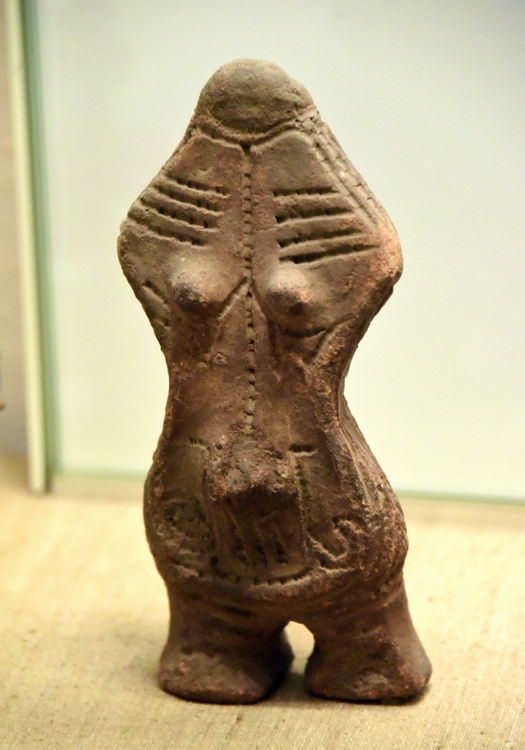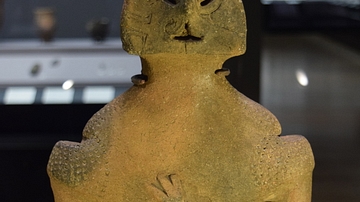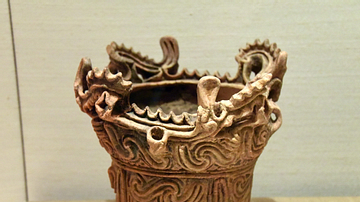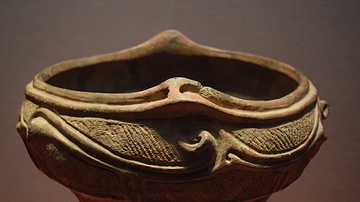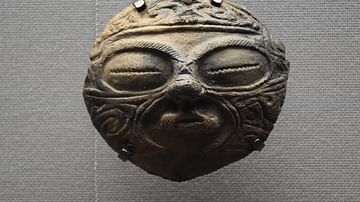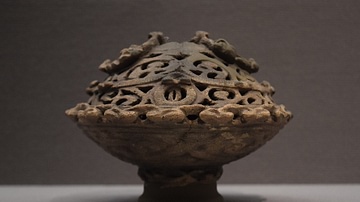Illustration
This is a headless dogu. Earthenware figures (dogu) were important in the Jomon period and as many as 1000 have been found at some sites. Some seem to represent imaginary animals but most are human in shape. Are they females, or without a specific gender? They seem to have been used in rituals, during which most were deliberately broken and thrown away. Earthenware. From Chubu region, Japan. Middle Jomon period, c. 2500 BCE. (The British Museum, London).
Cite This Work
APA Style
Amin, O. S. M. (2018, December 06). Jomon Period Dogu. World History Encyclopedia. Retrieved from https://www.worldhistory.org/image/9525/jomon-period-dogu/
Chicago Style
Amin, Osama Shukir Muhammed. "Jomon Period Dogu." World History Encyclopedia. Last modified December 06, 2018. https://www.worldhistory.org/image/9525/jomon-period-dogu/.
MLA Style
Amin, Osama Shukir Muhammed. "Jomon Period Dogu." World History Encyclopedia. World History Encyclopedia, 06 Dec 2018. Web. 19 Apr 2024.
